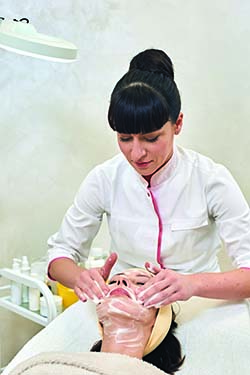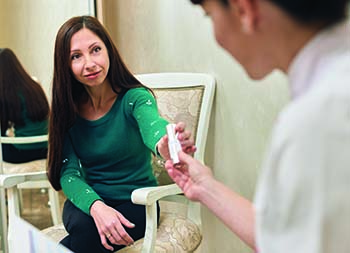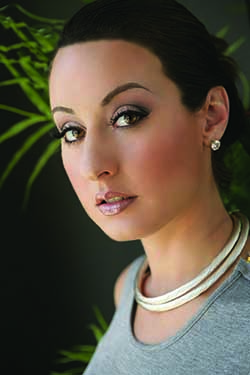Spa-trepreneurship 101: How-to Guide for Solo Aestheticians
Written by Nicole FlevarisMarketing is an integral part of every business, but most importantly, of a small business. Professionals do not need an advanced degree in marketing from a top tier school in order to succeed as a business owner.
Deciding to venture off and be self-employed is a difficult choice to make, but it can be very rewarding. To best prepare before taking the plunge, write a business plan, identify the market, budget and strategize, make plans for client contact and retention, seek learning opportunities, and set retail goals.
 STEP 1: BUSINESS PLAN
STEP 1: BUSINESS PLAN
Write a proper business plan. It does not have to be Harvard quality. A business plan is simply a resource for organizing thoughts. For those who are already in business, it is never too late to write one. There are many free resources online to help write the plan. If professionals do not organize their thoughts and identify their target customer, strengths, weakness, opportunities, and threats, the best laid marketing plans will fail. There are also resources available to help with finances and understanding the basics. Keeping costs under control and identifying waste will help professionals keep more money in their pockets to invest in marketing efforts.
STEP 2: MARKET IDENTIFICATION
For established professionals, start asking clients – especially new clients – how they heard about the spa. If current efforts to reach clients have been working, keep that in the marketing repertoire and increase efforts.
For new business owners, what works in certain communities does not work in others, so taking the pulse of the community is essential to gain an understanding of how potential clients in the area seek out services. Depending on the demographics of the area, this will range from word of mouth, to social media, to a heavy local-marketing budget.
STEP 3: BUDGET AND STRATEGY
Once an understanding of the market has been established, decide on budget and optimal mix of strategies. Optimal mix of marketing will consist of online efforts and in-person or print efforts. If budget is tight, guerilla – or free – marketing may be needed. Social media is one free avenue to use but may not be enough. This really depends on the clientele. In a retirement community, clients are probably not going to find services on social media, so a website may be more effective. In a salon suite, it may be a good idea to engage in internal marketing and referral possibilities with colleagues in the same building.
See what local magazines, newspapers, or other news outlets are around and find out if they would be willing to cover the spa and its services. Free public relations is a great way to get the spa’s name out there. See what local charities are in the area. Many national organizations also have local chapters. Giving back is a way to help someone while meeting people in the community. Look into sponsored events of related industries to get involved with and offer services.
As for larger markets and online presence, developing an understanding of web traffic and analytics, as well as using Google Adwords, can be useful. If running a campaign online or boosting posts on social media, try a few small campaigns first to see what works and what does not before committing the whole monthly budget. When marketing on social media, be sure to research proper hashtags so that people can find the spa. A long, obscure hashtag with the spa’s name in it may be ineffective.
 STEP 4: WEBSITE AND CLIENT CONTACT
STEP 4: WEBSITE AND CLIENT CONTACT
It is essential to have a proper website and modes of being reached. Again, the designs and costs have been simplified and some websites can even be hosted for free. Create a clean design and easily navigable website. If the spa has clients who often research services, professionals should spend the time to make an informative website that talks about them, their training and continuing education, as well as offers understandable descriptions of services.
Be reachable. Have an email address and phone number that accepts texts and voicemails. For professionals who are in services all day, have a website that reflects this and set up an automated, quick response text message, as well as voicemail. Letting clients know they will receive a response in a short time is key.
STEP 5: MAINTAINING CLIENTELE
Maintaining clientele is key. It costs more to bring in new customers, therefore, existing clients are precious. Offering them seasonal discounts or a complimentary add-on service that costs nothing but five to ten minutes of time goes a long way. Communicate with well-established clients and find out more about them. If they are a long-time client and have been receiving the same service or style for over a year, allocate some time for a conversation. For example, ask them about how their skin is feeling and if they have noticed anything different, like hormones changing. Nothing may have changed, but doing a yearly, in-depth follow up can be very meaningful to a client.
STEP 6: LEARNING OPPORTUNITIES
It may not be intuitive, but continuing education and learning new skills is an essential part of marketing. Because there are undercurrents of low-quality work in the industry, clients are on the hunt for great service providers. Potential clients will look at a website and, if there is a list of certifications featured, they will be prompted to call to find out more. This is more than half of the battle in gaining a new client. Formal education and continuing education by professionals has become a rare thing with the advent of the internet. Trade magazines, online resources, and in-person courses are valuable and should be explored.
However, many techniques are so nuanced that hands-on experience is critical. Learning from YouTube University with Professor Google is not continuing education. Learning in a live class that contains other students is useful because they may bring questions up that would otherwise never be thought of. Through education, services can be added to a menu and professionals can become more rounded. This may also allow them to increase the prices of existing services. Additionally, education brings the ability to explain to clients the quality of services provided. Educating clients on services will increase loyalty because it will show that the professional cares about their well-being and it will also communicate professionalism to them.
STEP 7: THE IMPORTANCE OF RETAIL
Education on techniques is one thing, but making smart choices and learning about the products used is equally important. Selling clients retail does not just improve bottom line revenue, it ensures clients maintain the services provided.
Choosing the right line based on ingredients is important. But, never neglect to find out if there is a cross-promotion or marketing opportunity available with these brands. Clients often seek out a line and may find a spa from the line’s directory. Some lines offer ways for spas to be a brand ambassador or have free marketing opportunities that can help build links to the spa’s website and make them more relevant in online searches. Also, consider using multiple lines because there is no ubiquitous solution for all problems. Some lines may work in the beginning for a client and later on they may need to transition. Keeping current and educated is key, but also having inventory to sell on the spot should not be forgotten. Many companies also offer loyalty programs to spas selling their products, so explore these benefits.
There are many ways to market and grow a business. The key is to try different things and find out what works best. It may include trial and error, but through great work and positive word of mouth, any spa can continue to grow and thrive.

